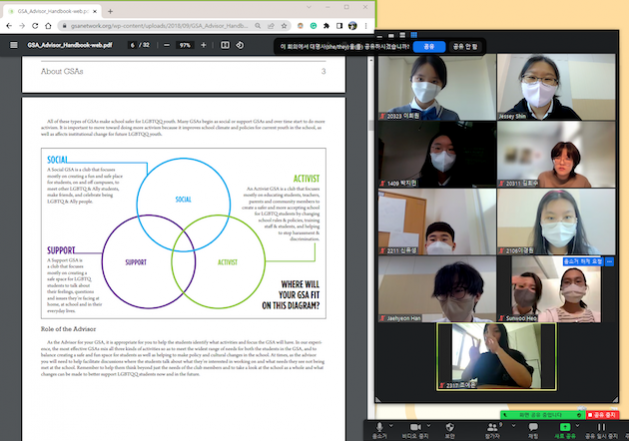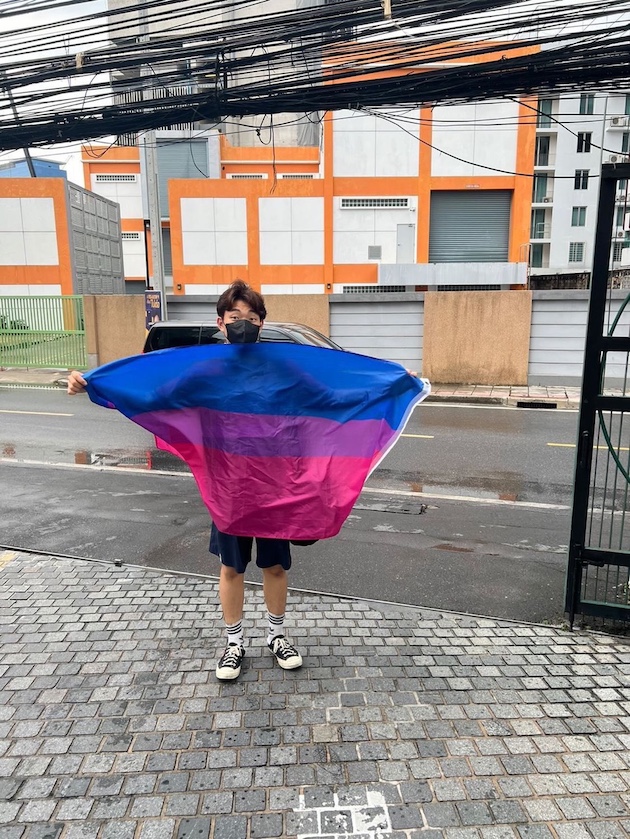Why We Need a Digital Safe Space for LGBTQ Youth - Thoughts from Asian Teens

Seoul & Nonthaburi, Thailand, Jul 04 (IPS) - Recently, I watched a documentary titled Why We Can’t See Disabled People.
It chronicled how disabled people fought for their right to mobility throughout the past 20 years—and how the public has turned a blind eye to them time and time again.
South Korea is an incredibly unkind country when it comes to minorities. Disabled people are still fighting for the right to be seen in public. Many LGBTQ people live their lives afraid to come out, afraid to endure the violence and rejection that will ensue. Systems, governments, and communities are created for the “normal” Korean, which is demonstrably not the same for all Koreans.
Due to the collectivist culture, homogeneity is a highly regarded virtue here. I remember being taught in school that we are a danilminjok—in other words, monoethnic—like we were supposed to be proud of it. We grew up learning that the community was sacred and that it should be protected at all costs. There was power in belonging somewhere.
But I soon learned that this “community” was more exclusive than I’d once thought, riddled with unspoken eligibility requirements. For disabled protesters, “belonging” meant being able-bodied; for queer students like myself, it’s cisgender and heterosexual. I vividly remember the horror I felt when a lesbian couple faced expulsion for their sexual orientation in a local middle school. I also remember the momentary relief I felt when I learned that the charge was dropped—and the horror continued because the two were relentlessly ostracized and gossiped about until they graduated.
Because of this incident and many others like it, I started a Gay-Straight Alliance (GSA) with some of my friends last year, particularly to address the issues that LGBTQ teens face in East Asia. Here, I learned just how much queer students struggle to find—and, in my case, create—support systems.
In the United States, the official GSA Network provides educational and support opportunities to GSA clubs. But we couldn’t apply to be registered in their database because we weren’t based in North America. After exchanging emails with the directors, we had to accept that official registration was hopeless and that the legalities were too complicated to sort out. We were left to our own devices, which were limited to making Instagram posts and holding Zoom meetings.

If I’ve learned anything in the past year, it’s that there are few “safe spaces” for LGBTQ teens, especially in countries like Korea. Visibility seems to be an issue: there’s little to no queer representation in Korean media, nor is there a curriculum explicitly addressing sexual orientation.
Only 9.6% of Koreans feel that LGBTQ rights are respected in their country. Public spaces like churches and schools often prove unsafe for LGBTQ students. Furthermore, the few safe areas that exist are inaccessible—the gay bars on the streets of Seoul, for instance—are both unavailable and incredibly dangerous to teens.
Consequently, many teens use the Internet to find the “safe space” they desperately need. It is easier to access than in-person clubs and meetings and guarantees anonymity.
Numerous Facebook groups, Twitter hashtags, and subreddits are dedicated to the LGBTQ community, and young people are not excluded in these spaces because they make up the majority of the user base. The development of new platforms like Yubo has amplified this trend. With “a dedicated community for youth aged 13 to 17,” it focuses on “making genuine connections and forming online friendships, rather than just trying to get ”.
These communities serve as a vital lifeline for many teens who find themselves ostracized and invisible at home or in school—they provide a place they can escape to when need be.
However, these spaces are not fully representative of the racial and ethnic diversity among queer people. These communities are mostly white and English-speaking. Consequently, the sense of safety and community from digital “safe spaces” often doesn’t extend to racial minorities.
On a societal level, studies suggest that “whites are more likely than non-whites to say society is a lot more accepting of LGBT adults now compared with a decade ago (58% vs. 42%)”.
“It’s urgent that we talk about Asian queerness because we are speaking the truth Asian American queer people exist—but not only exist: built movements and must be considered when creating inclusive spaces,” says Li-Anne in a recent blog post on North Carolina Asian Americans Together.
Many students have to deal with issues like getting disowned, expelled and bullied because of their identity. These experiences of isolation aren’t exclusive to my friends and me: many students are in the same position as us, having to choose between being safe and being themselves.

Recently, we ran a fundraiser to advocate for the inclusion of LGBT+ youth and ended up ?1,200,000 (about 960 US dollars) to donate to Concern Worldwide, an international NGO. However, despite the successful campaign, there were some bumps in the road: Who would we advertise to? What types of slogans would be considered “appropriate”? How could we go about this in the best way possible?
At my GSA, I met a group of incredibly compassionate, dedicated people who want to help LGBT+ youth at risk or in danger. Over the last year and a half, we’ve run campaigns, started campaigns, and created digital support systems to make that happen. However, it often proved difficult to do so because of continued discrimination.
It’s time for Asia—as much as Europe and North America—to protect and pay increased attention to “safe spaces” that promote the inclusion of LGBTQ youth.
Chaeeun Shin (team leader ), Junwoo Na, and Minchae Kang are high school learners living in Asia. They participated in a joint APDA, and IPS training on developing opinion content. Hanna Yoon led the course and edited the opinion content.
IPS UN Bureau Report
Follow @IPSNewsUNBureau
Follow IPS News UN Bureau on Instagram
© Inter Press Service (2022) — All Rights Reserved. Original source: Inter Press Service
 Global Issues
Global Issues